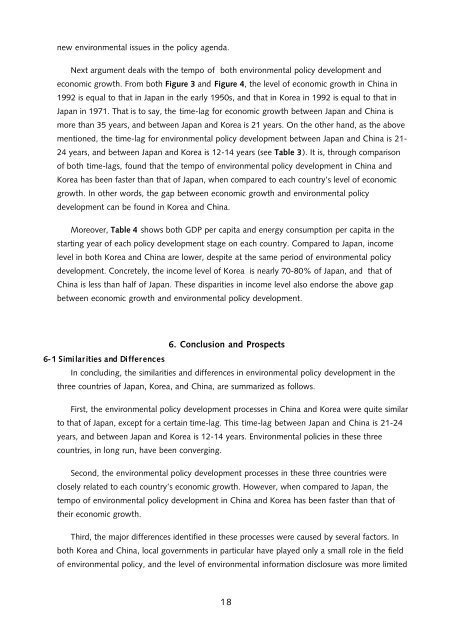Untitled - UNU-IAS
Untitled - UNU-IAS
Untitled - UNU-IAS
Create successful ePaper yourself
Turn your PDF publications into a flip-book with our unique Google optimized e-Paper software.
new environmental issues in the policy agenda.<br />
Next argument deals with the tempo of both environmental policy development and<br />
economic growth. From both Figure 3 and Figure 4, the level of economic growth in China in<br />
1992 is equal to that in Japan in the early 1950s, and that in Korea in 1992 is equal to that in<br />
Japan in 1971. That is to say, the time-lag for economic growth between Japan and China is<br />
more than 35 years, and between Japan and Korea is 21 years. On the other hand, as the above<br />
mentioned, the time-lag for environmental policy development between Japan and China is 21-<br />
24 years, and between Japan and Korea is 12-14 years (see Table 3). It is, through comparison<br />
of both time-lags, found that the tempo of environmental policy development in China and<br />
Korea has been faster than that of Japan, when compared to each country’s level of economic<br />
growth. In other words, the gap between economic growth and environmental policy<br />
development can be found in Korea and China.<br />
Moreover, Table 4 shows both GDP per capita and energy consumption per capita in the<br />
starting year of each policy development stage on each country. Compared to Japan, income<br />
level in both Korea and China are lower, despite at the same period of environmental policy<br />
development. Concretely, the income level of Korea is nearly 70-80% of Japan, and that of<br />
China is less than half of Japan. These disparities in income level also endorse the above gap<br />
between economic growth and environmental policy development.<br />
6. Conclusion and Prospects<br />
6-1 Similarities and Di fferences<br />
In concluding, the similarities and differences in environmental policy development in the<br />
three countries of Japan, Korea, and China, are summarized as follows.<br />
First, the environmental policy development processes in China and Korea were quite similar<br />
to that of Japan, except for a certain time-lag. This time-lag between Japan and China is 21-24<br />
years, and between Japan and Korea is 12-14 years. Environmental policies in these three<br />
countries, in long run, have been converging.<br />
Second, the environmental policy development processes in these three countries were<br />
closely related to each country’s economic growth. However, when compared to Japan, the<br />
tempo of environmental policy development in China and Korea has been faster than that of<br />
their economic growth.<br />
Third, the major differences identified in these processes were caused by several factors. In<br />
both Korea and China, local governments in particular have played only a small role in the field<br />
of environmental policy, and the level of environmental information disclosure was more limited<br />
18

















